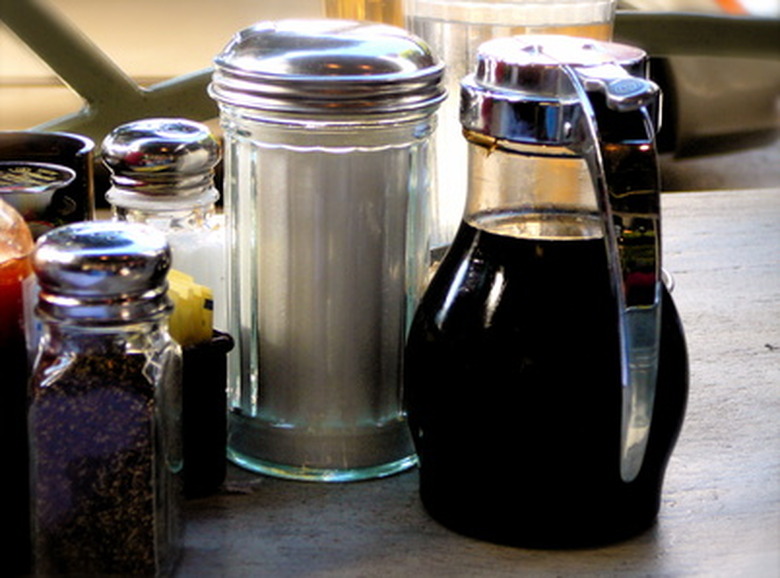The Negative Impacts On The Environment By Making Maple Syrup
Maple syrup is made from the sap of maple trees, which contains 38 fewer calories a spoonful than white sugar. U.S. states like Vermont and Massachusetts are major centers of syrup production, but Canada still produces 80 percent of all North American maple syrup. The negative impacts on the environment by making maple syrup do not include the harvesting process.
Environmental Impacts from Pesticides
Environmental Impacts from Pesticides
Although much of maple syrup production and processing is carried out without using pesticides, excess applications and residues of pesticides which enter the water supply do pose a risk to animals and humans. The U.S. Fish and Wildlife Service's data states, "In recent studies of major rivers and streams, one or more pesticides were detected more than 90 percent of the time in water, in more than 80 percent of fish sampled, and in 33 percent of major aquifers." Maple trees are at risk from attacks by insects like the Asian long horned beetle, which kills entire plantations if left to multiply unchecked. The beetle also has no natural predators, so more ecologically-friendly practices such as importing natural predators cannot be used against this beetle. Diseases such as tar spot, maple wilt and sap streak also infect maple trees and syrup producers are often left with no choice but to spray to protect their livelihoods when these appear. Syrup producers can limit the risks by choosing pesticides which break down more quickly, causing less damage to the environment. The U.S. Environmental Protection Agency offers a wide range of information on this subject on its website.
Environmental Costs of Processing
Environmental Costs of Processing
The Massachusetts Maple Producers Association tells us it takes 40 gallons of maple sap to make one gallon of pure maple syrup. The traditional process involves hours of boiling in an evaporator, or furnace-like device, fired by oil or wood. Processing 800 gallons of maple sap takes approximately 60 gallons of oil or a cord of wood to produce 20 gallons of finished syrup. These costs for using non-renewable energy sources such as oil and the resulting pollution are very high. The Colorado Department of Health and Environment, Air Pollution Control Division states, "Burning wood produces an array of harmful chemicals. Carbon monoxide, hydrocarbons, and formaldehyde are given off when wood is burned." Estimates by the state's scientists show approximately five percent of Denver's winter "smog" comes from wood fires. Alternatives to the traditional process being explored include expensive "reverse osmosis" machines used to lower the water content of sap before boiling.
Transit and Storage Costs to the Environment
Transit and Storage Costs to the Environment
Costs of transporting heavy containers of maple syrup to stores all over the U.S. include using large amounts of fuels like oil in the form of petrol and electricity for climate controlled transport. Organizations like the Massachusetts Maple Producers Association educate the public in the state about the environmental benefits of buying locally produced products, thus aiding the members to gain new business and cutting down on environmental pollution.
Cite This Article
MLA
Ann, Jane. "The Negative Impacts On The Environment By Making Maple Syrup" sciencing.com, https://www.sciencing.com/the-negative-impacts-on-the-environment-by-making-maple-syrup-13427631/. 21 July 2017.
APA
Ann, Jane. (2017, July 21). The Negative Impacts On The Environment By Making Maple Syrup. sciencing.com. Retrieved from https://www.sciencing.com/the-negative-impacts-on-the-environment-by-making-maple-syrup-13427631/
Chicago
Ann, Jane. The Negative Impacts On The Environment By Making Maple Syrup last modified August 30, 2022. https://www.sciencing.com/the-negative-impacts-on-the-environment-by-making-maple-syrup-13427631/
